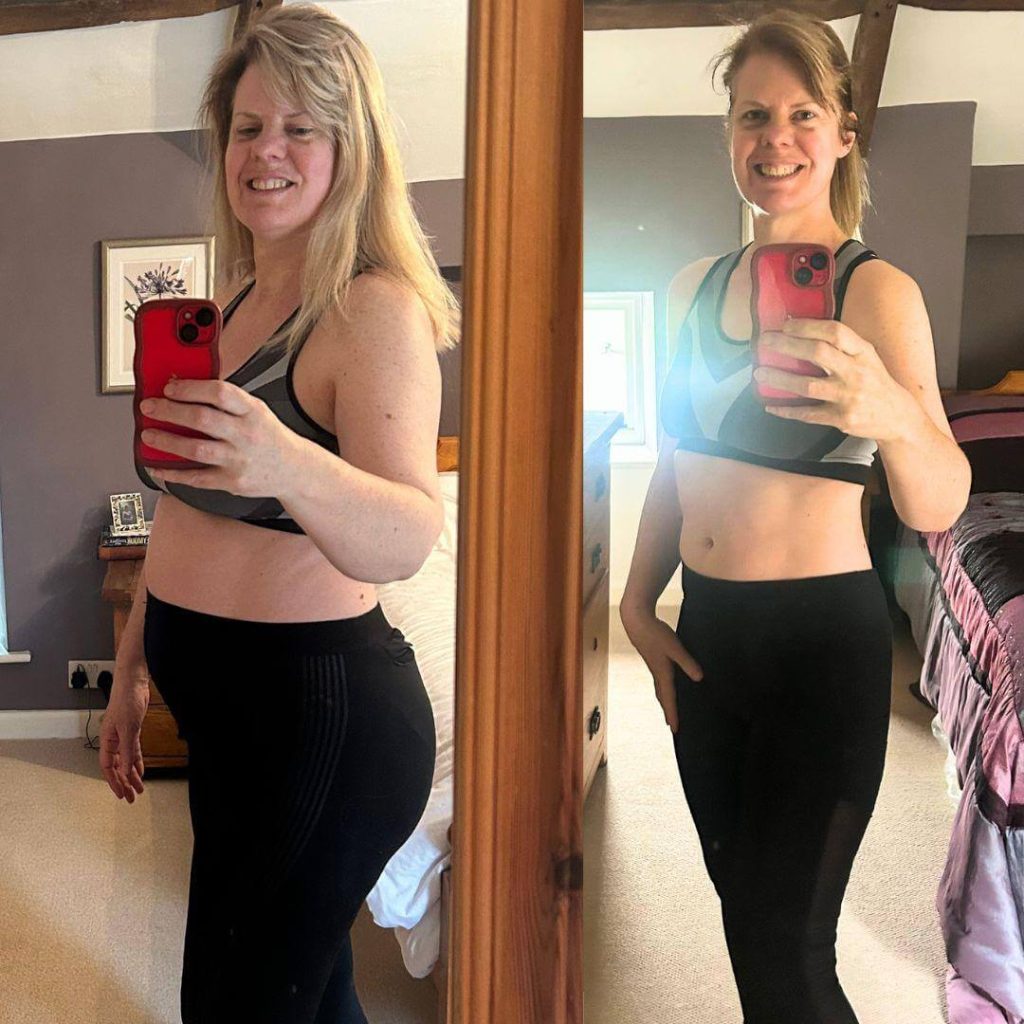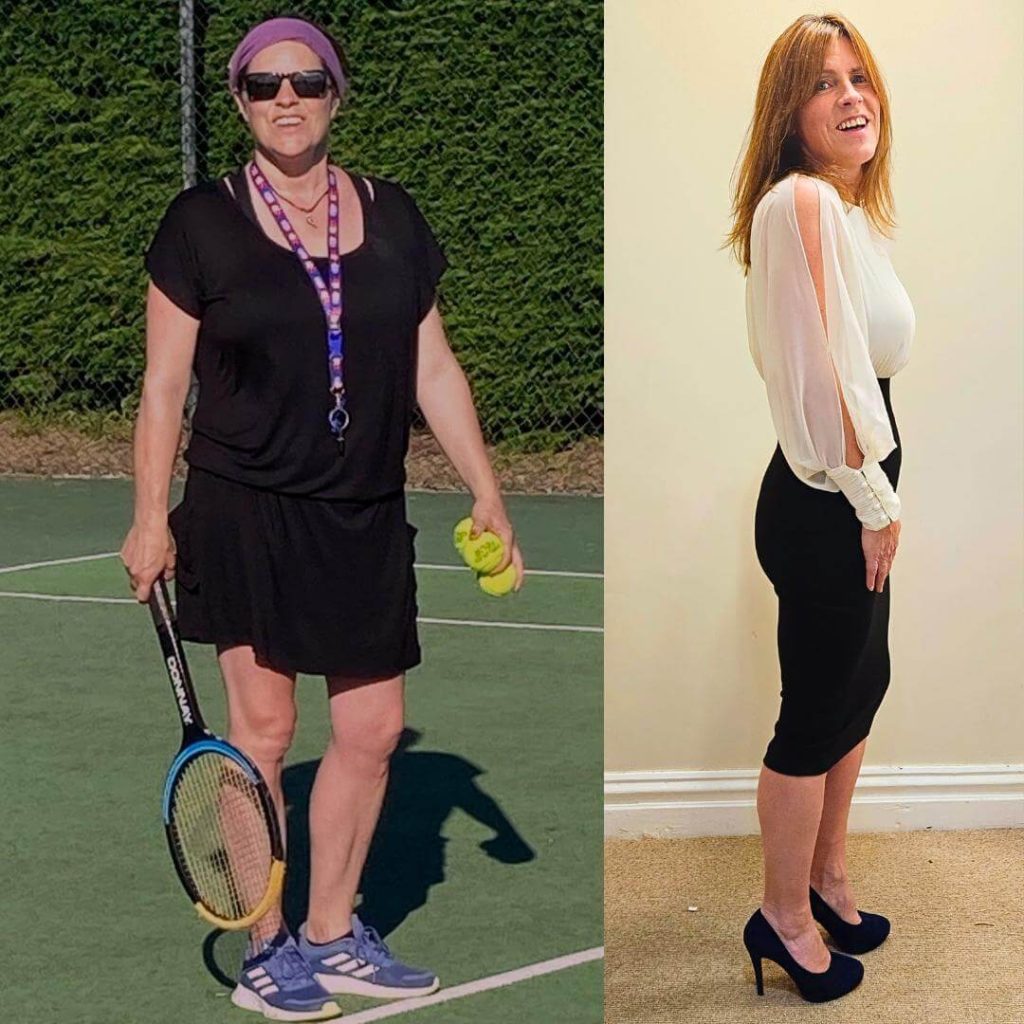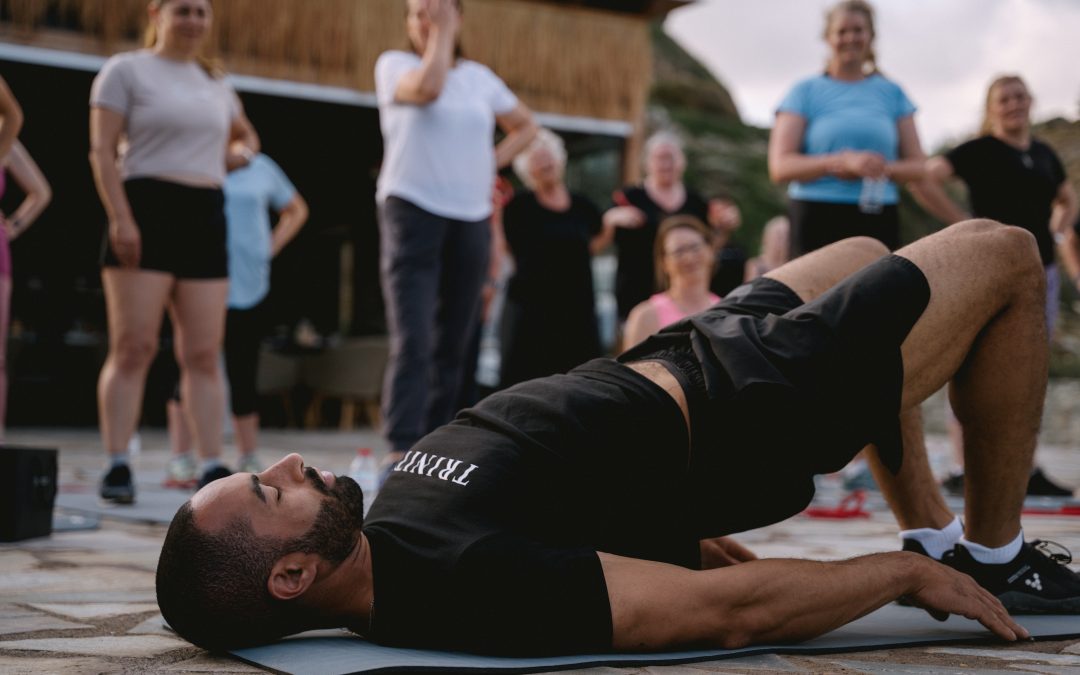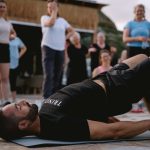Back pain is a common concern for women over 40, and knowing how to prevent back pain in menopause is essential for maintaining mobility, strength, and overall quality of life.
Hormonal changes, declining muscle mass, and lifestyle factors like prolonged sitting or high-stress routines can all contribute to discomfort in the spine and surrounding muscles.
Many women also notice that what used to work for weight loss, like cutting carbs or endless cardio, just doesn’t work anymore. These changes can feel frustrating, as if your body is working against you.
But here’s the truth: there is always a fix. It’s about understanding the changes happening in your body and putting the right exercise, nutrition, and lifestyle strategies in place so you can feel stronger, more confident, and pain-free again.

Why is Back Pain Common in Menopause?
Back pain becomes more common in menopause because of several interconnected factors:
1. Hormonal Changes
Oestrogen protects bones, muscles, and connective tissue. When levels drop, bones become more fragile, and muscles lose their natural support role, leaving the spine less stable. This increases the risk of stiffness, joint pain, and even osteoporosis.
2. Muscle Loss
From around age 30, we naturally lose 1% of muscle mass each year if we’re not doing strength training which is a process known as sarcopenia. During menopause, this muscle loss accelerates because of lower oestrogen and testosterone levels.
With weaker muscles, especially in the core and back, your spine loses its natural support system. Everyday activities like lifting shopping bags, sitting for long hours, or even sleeping in the wrong position can suddenly trigger pain.
3. Weight Gain
Many women notice weight gain during menopause, particularly around the abdomen. This shift happens because falling oestrogen changes how the body stores fat.
Carrying extra weight around the middle increases pressure on the lower spine and discs, leading to tightness, inflammation, and more frequent flare-ups of back pain.
4. Lifestyle factors
Decades of modern living like sitting at a desk, driving long distances, using smartphones, or neglecting movement, take their toll over time.
Poor posture weakens the stabilising muscles that support your back, and when combined with hormonal and muscle changes, it creates the perfect storm for ongoing pain.

“Before starting Trinity, I weighed 14 ½ stone or 92 kg which was my heaviest ever. I have a bad back with compromised discs in my lower back and a torn disc. I have problems with my sacroiliac joint and my neck. Sometimes I have sciatica. In the past I probably would have stopped exercising completely and led on the sofa, but having to check in with my coach each week and say how many workouts I have completed each week made me accountable in a way that I have not been before. I have lost 3 stone and I feel more confident that I am a fit, strong person. My blood pressure in March was around 150/120. After a few months with Trinity, my blood pressure went down to 116/74.”
– Rachel Pratt (52), Trinity Client
How to Prevent Back Pain in Menopause
Preventing back pain in menopause requires a proactive approach. Instead of avoiding movement or masking symptoms, the key is to strengthen your body, fuel it with the right nutrients, and improve your daily habits.
1. Build Strength to Support Your Spine
Strength training is essential because it directly tackles the loss of muscle and bone density caused by menopause. By lifting weights in a safe, controlled way, you build muscle around the spine and core, giving your back more support.
This not only reduces pain now but also prevents it from getting worse in the future.
2. Improve Posture and Core Stability
When posture breaks down, whether from sitting too long, hunching over devices, or weak core muscles, the spine takes more strain. Core exercises like planks, bird-dogs, and bridges strengthen deep stabilising muscles, keeping the spine aligned and reducing pressure on the lower back.
3. Stay Mobile and Stretch
Tight hips, hamstrings, and glutes all contribute to back pain. Gentle mobility routines, stretching, yoga, or Pilates help keep muscles flexible, reduce stiffness, and improve how your body moves. Even 10–15 minutes a day can make a difference.
4. Balance Hormones and Reduce Inflammation
Nutrition and lifestyle also affect back pain. Chronic stress, poor sleep, and inflammatory foods (processed snacks, refined carbs, sugary drinks) can all worsen symptoms. Choosing whole, nutrient-dense foods and prioritising sleep helps your body recover and reduces aches.

“I was a reasonable 12 stone 3 lbs when I first heard about Trinity. My shape was all boob and tummy and I saw myself as a potato shape. More importantly everything ached. I couldn’t sit up from lying down without rolling into my side first, my hips, back and shoulders gave me a lot of trouble. I felt hopeless. Powerless to effect the change I wanted and on a downward slope to hip replacements and heart disease. Since Trinity I now weigh 10 stone dead on. And I’m toned! I don’t look like a potato or a saggy old turkey. My aches in every part of my body are reducing and I’m well within a healthy BMI and my children see me working hard to stay healthy and to feel good. I am still genuinely amazed that the programme works as well as it does.”
– Sally Ham (53), Trinity Client
The Best Exercises to Help Menopause Back Pain
Not all exercise is equal when it comes to preventing back pain. Some workouts, like HIIT or running, can place extra strain on joints and increase stress hormones, leaving you more achy. Instead, focus on movements that build strength, stability, and flexibility.
1. Low Impact Strength Training (LIST)
LIST involves slow, controlled weightlifting, typically three sessions a week for 30–45 minutes. Unlike high-intensity cardio, LIST protects your joints, strengthens muscles, tones your body, and even boosts metabolism.
Strong muscles, especially in the back, glutes, and core, support the spine, improve posture, and reduce strain on ligaments and discs. LIST also increases bone density, lowering the risk of fractures and osteoporosis, which is especially important during menopause.
Use light to moderate weights at home or the gym, focusing on slow, controlled movements. Include exercises like squats, deadlifts, rows, and overhead presses. You don’t need to spend hours in the gym, even just 30–40 minutes, three times a week, can make a significant difference.

2. Walking
Walking is simple, low-impact, and accessible for almost everyone. Aim for 7–10k steps daily, breaking it up into smaller walks if needed.
It improves circulation, keeps joints lubricated, and maintains mobility, which reduces stiffness and prevents your back from feeling tight. You don’t need to spend all day walking, take short walks during lunch breaks, park further from shops, or add a daily evening stroll.
Using a step tracker can help make it consistent and motivating.
3. Yoga and Pilates
Both yoga and pilates focus on core strength, flexibility, and controlled movement, all of which relieve muscle tension and improve spinal support.
A strong core stabilizes the spine, improves posture, and reduces pressure on vertebrae, while increased flexibility prevents muscles from becoming tight and achy.
Try 20–30 minutes at home, using beginner-friendly online classes, or attend a weekly studio session. Even a short daily stretch routine can reduce discomfort.
4. Swimming
Swimming or water aerobics supports your body in the water, taking pressure off joints and the spine while still allowing effective muscle engagement.
Water buoyancy reduces strain, while resistance builds strength in the back, shoulders, and core, all of which have key muscles that protect against pain.
Swim 2–3 times per week, even for 20–30 minutes. Water walking or gentle aqua aerobics are excellent alternatives if laps aren’t feasible.
Tip: Consistency is more important than intensity. Combining LIST, walking, flexibility work, and occasional swimming creates a balanced routine that strengthens your muscles, supports your spine, and keeps back pain at bay during menopause.

“Before I joined Trinity, I was 50 years old and at 104kg, my knees ached when I walked. I avoided doing any kind of exercise and I didn’t look at myself in the mirror. I had got to the point where I felt like it was all too late and that I would just carry on getting fatter and fatter until it killed me. I know its a cliche but Trinity has actually transformed my life. I’ve lost 30kg and I feel strong mentally and physically. I have a spring in my step and the only aches and pains I have are DOMS related! I’ve done the work to get here, but Trinity gave me the tools.”
– Rachel Hillier (52), Trinity Client
What Else Can Help Back Pain in Menopause?
Calcium for Bone Strength
Bone density drops in menopause due to lower oestrogen, making bones more fragile. Calcium helps rebuild and protect them. Sources include green vegetables, fortified plant milks, tofu, and sardines.
Stronger bones mean less risk of fractures and osteoporosis, two common causes of long-term back pain.
Vitamin D for Energy and Mood
Vitamin D acts like a hormone, boosting bone strength, energy, and mood regulation. In the UK, most women don’t get enough from sunlight, making supplements essential.
Vitamin D can help to prevent fatigue, muscle weakness, and low mood all of which are factors linked with back pain and lower quality of life.
Magnesium for Relaxation and Sleep
Stress and hormonal changes deplete magnesium, which is vital for sleep, mood, and muscle function. Supplementing or eating magnesium-rich foods (nuts, seeds, leafy greens) can ease tension.
Better sleep and muscle relaxation mean your body recovers properly, reducing stiffness and pain.
Watch How Our Fit Over 40 Programme Can Help You
What To Do Next?
At Trinity Transformation, we’ve helped over 7,000 women in their 40s, 50s, and 60s take back control of their bodies and feel stronger than ever.
Our 97% success rate proves that when you follow the right system, you can look and feel amazing again, even in menopause.
Unlike quick fixes, fad diets, or weight-loss jabs, our program is built around long-term, sustainable changes. We don’t just tell you to “eat less and move more.” We guide you through a complete lifestyle re-education, designed specifically for women in menopause.
With Trinity, you’ll get:
- A proven exercise system (LIST training) that tones your body and prevents back pain without wrecking your joints.
- Nutrition guidance tailored to women over 40, focusing on the right balance of protein, calcium, magnesium, and vitamin D.
- Step-by-step coaching so you never feel overwhelmed—we break things down into simple, weekly changes.
- Personal support from expert coaches who understand exactly what your body needs in menopause.
Many of our clients tell us they feel younger, fitter, and more confident than they have in decades. They lose 15–25 pounds in 12 weeks, drop 1–2 dress sizes, and finally feel comfortable in their own skin again.
If you’re ready to prevent back pain, feel confident in your clothes, and enjoy life without limits, our Fit Over 40 program is designed for you.
Frequently Asked Questions
Can exercise make back pain worse in menopause?
Yes, high-impact exercise like running or HIIT can aggravate back pain. Low-impact strength training and walking are safer and more effective.
Does menopause cause permanent back pain?
Not necessarily. Back pain is common, but with strength training, good nutrition, and lifestyle changes, most women see huge improvements.
Will losing weight help reduce menopause back pain?
Yes. Excess weight adds strain to the spine, especially the lower back. Sustainable fat loss through strength training and balanced eating reduces this pressure.
Can supplements really help back pain in menopause?
Supplements like Vitamin D, calcium, and magnesium can support bone density, energy, and muscle function, all of which reduce back pain when combined with exercise.




